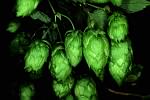|
History of Hops
Pillow of Warm Hops Often used to relieve toothache and earache, and allay nervous irritation. Hop Tea An infusion of the leaves, strobiles and stalks often taken through a wine glass three times a day in early spring for sluggish livers. Hop Juice Hop juice was originally used to cleanse the blood Lupulin The chemical lupulin is someimes used as a mild sedative, inducing sleep without causing headaches. It is also administered as a hypnotic, either in pills with alcohol, or enclosed in a cachet. Hop Shoots Romans ate the shoots in the spring the same way esparagus is eaten today. Brown Dye The leaves have been used in the past to produce a brown dye.
|
 There have been many historical uses of the hop plant other
than brewing beer. Hops have been used medicinally for
hundreds of years, and have tonic, nervine, diuretic and
anodyne properties. The hop flower contains volatile oils
which have a sedative effect and the Lupamaric acid (the
bittering agent,) is stomachic, which means that hops inprove
the appetite and often promote sleep. Here are some of
the most common medicinal uses of the plant
There have been many historical uses of the hop plant other
than brewing beer. Hops have been used medicinally for
hundreds of years, and have tonic, nervine, diuretic and
anodyne properties. The hop flower contains volatile oils
which have a sedative effect and the Lupamaric acid (the
bittering agent,) is stomachic, which means that hops inprove
the appetite and often promote sleep. Here are some of
the most common medicinal uses of the plant